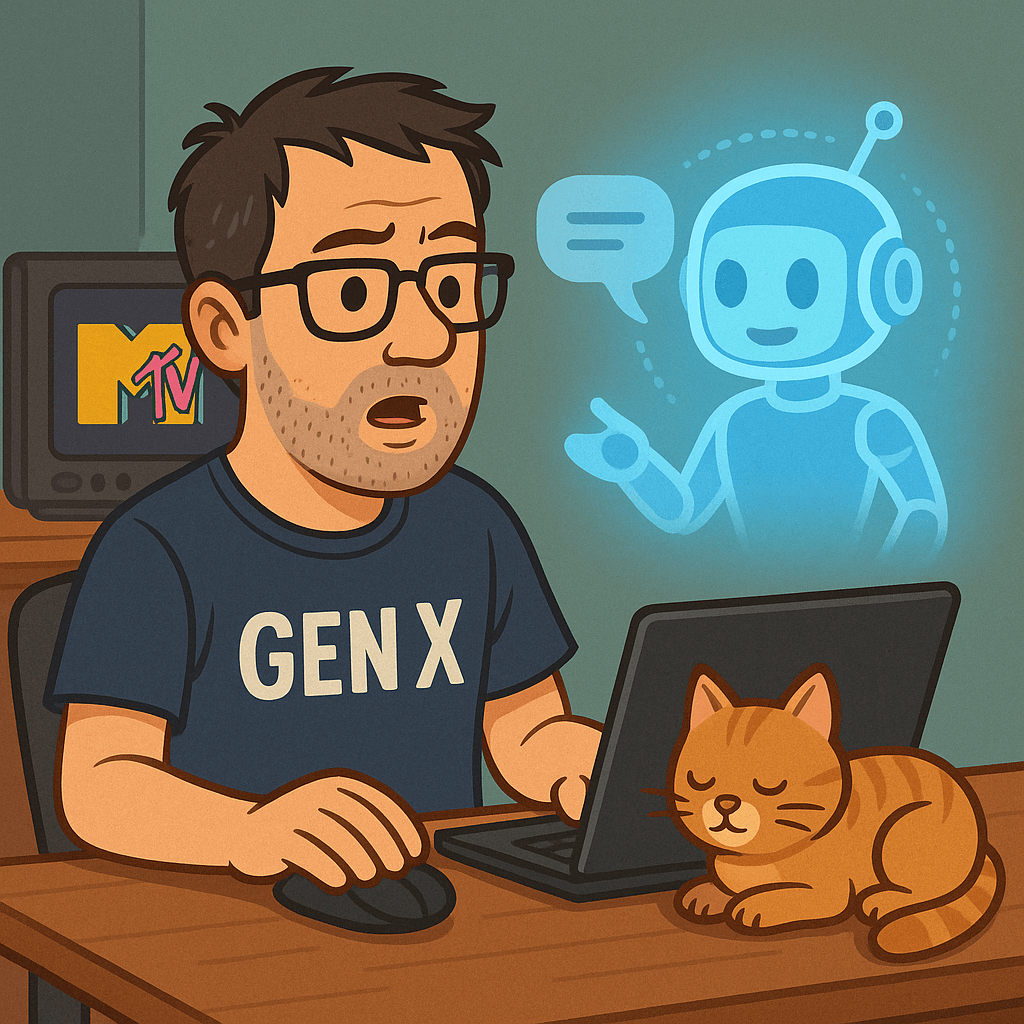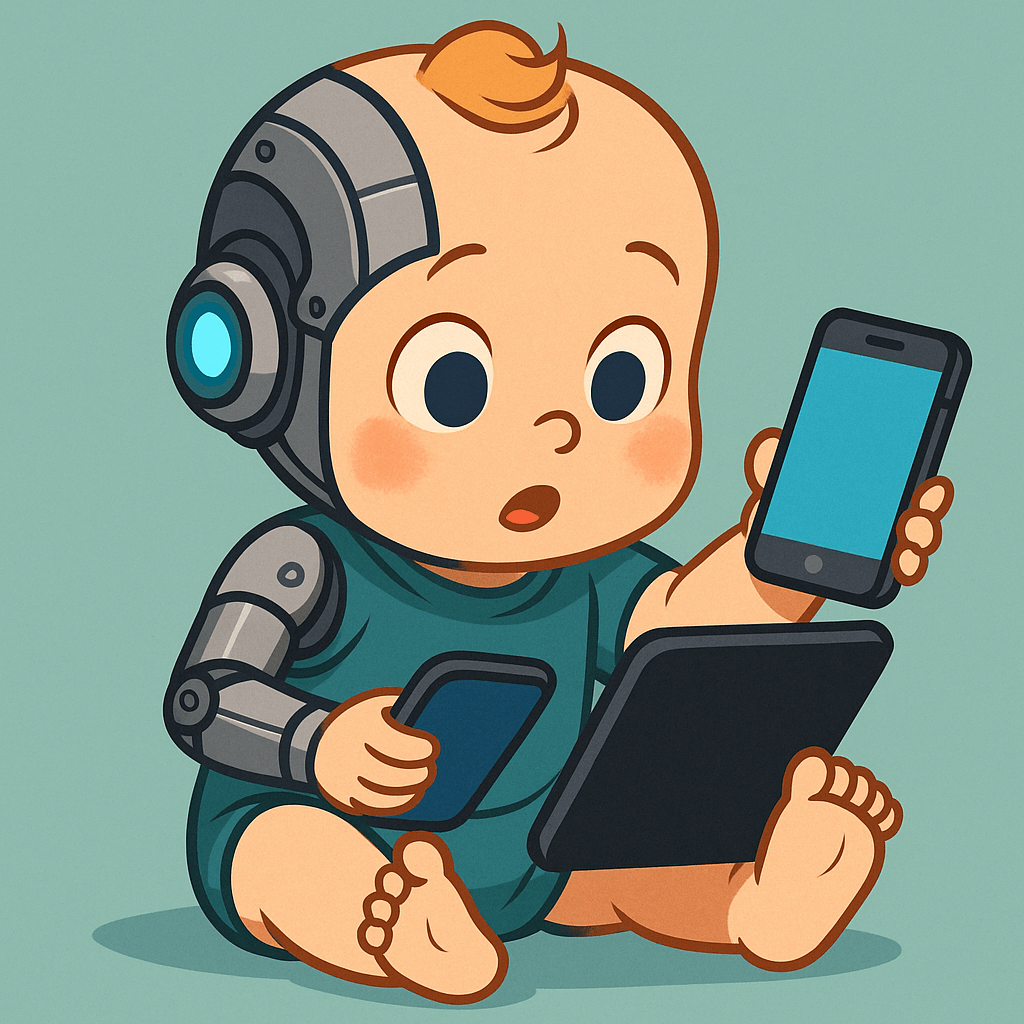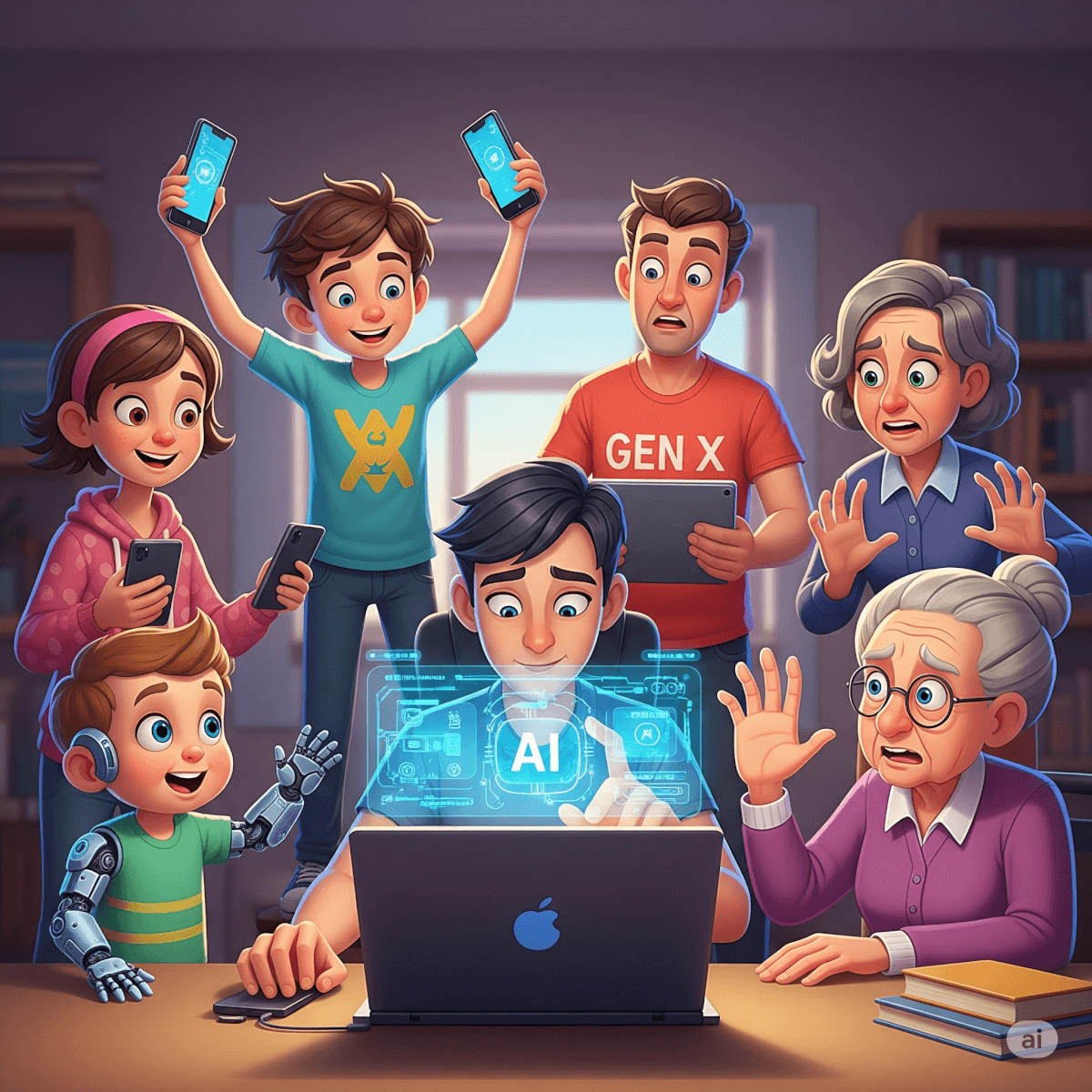Artificial intelligence isn’t just a trend—it’s a tectonic shift, reshaping how we work, learn, communicate, and create. But not everyone is jumping on the AI train at the same speed. From skeptical Boomers to app-native Zoomers, here’s how each age group is adapting to the age of algorithms.
Click to Read Sections:
- 1 Who’s Using AI, For What, and How by Age Group?
- 1.1 Silent Generation (Born 1928–1945 | Ages 80–97)
- 1.2 Baby Boomers (Born 1946–1964 | Ages 61–79)
- 1.3 Generation X (Born 1965–1980 | Ages 45–60)
- 1.4 Millennials (Born 1981–1996 | Ages 29–44)
- 1.5 Generation Z (Born 1997–2012 | Ages 13–28)
- 1.6 Generation Alpha (Born 2013–2025 | Ages 0–12)
- 1.7 Final Thoughts: A Generational Snapshot of AI Adoption
Who’s Using AI, For What, and How by Age Group?
Silent Generation (Born 1928–1945 | Ages 80–97)
The Silent Generation is not typically the target market for cutting-edge tech, but AI is quietly making their lives safer and more manageable. While most aren’t aware they’re using it, they benefit from AI in healthcare, voice assistants, and fraud protection.
Typical Apps
Smart speakers like Amazon Alexa and Apple Siri, medical alert systems, and AI-driven telehealth platforms are common touchpoints.
Tasks
They use AI mostly for voice commands, medication reminders, and health monitoring—often via smartwatches or medical devices.
Usage Stats
Only 3% of Americans over 75 report regular use of generative AI tools, according to Pew Research (2024). However, indirect usage through smart tech is growing.
Patriotic Kenny, a lovable older gentleman with a booming voice and an American flag always nearby, went viral on social media for his hilarious and heartfelt conversations with his Amazon Alexa. His clips—ranging from asking Alexa to play Lee Greenwood’s “God Bless the USA” to scolding it for not recognizing Ronald Reagan’s birthday—captured the internet’s attention for blending humor, nostalgia, and genuine charm. Kenny’s videos resonated with viewers across generations, turning him into an unlikely digital star and showcasing how even the most traditional Americans are finding their own ways to connect with AI.
Baby Boomers (Born 1946–1964 | Ages 61–79)
Boomers are AI skeptics—but that doesn’t mean they aren’t using it. When AI is baked into tools they already trust, like search engines and bank apps, they’re more receptive.
Typical Apps
Google Assistant, Bing AI, Grammarly, and fraud detection tools in banking apps are common.
Tasks
Boomers use AI for email assistance, financial monitoring, voice searches, and navigation. Convenience is key.
Usage Stats
According to Salesforce’s 2024 Digital Skills Report, only 20% of Boomers use AI intentionally, though many interact with it unknowingly through apps and services.
What Do Baby Boomers Fear Most About AI?

Baby Boomers often approach AI with caution, and their biggest fears stem from concerns about privacy, job displacement, and the erosion of human connection. Many in this generation worry that AI is collecting too much personal data without clear consent, leading to identity theft, surveillance, or manipulation—especially from platforms they didn’t grow up trusting. Others fear that AI will automate away not just manual labor, but also skilled jobs, undermining the value of decades of hard-earned experience. There’s also a deeper unease: that AI could replace human judgment, empathy, and social interaction, leading to a society where people rely more on machines than each other. A 2023 AARP survey found that fewer than 30% of Baby Boomers felt comfortable using AI tools, and most expressed concern about AI making decisions in healthcare, finance, or government. For many Boomers, the fear isn’t just about the technology—it’s about being left behind in a world changing too fast for comfort.
Generation X (Born 1965–1980 | Ages 45–60)
Gen X is the bridge generation. They’re digitally literate and professionally driven, adopting AI where it increases efficiency at work and home.

Typical Apps
They often use ChatGPT, Microsoft Copilot, Grammarly, Canva with Magic Write, and Jasper AI.
Tasks
Gen X turns to AI for email writing, reporting, budgeting, CRM automation, and content creation.
Usage Stats
LinkedIn’s 2024 Workplace AI Index reports that 55% of Gen X professionals use AI tools weekly, mostly in office settings.
Millennials (Born 1981–1996 | Ages 29–44)
Millennials are the enthusiastic early adopters. They use AI to balance work, side hustles, parenting, and creative projects.
Typical Apps
Millennials frequently rely on Notion AI, ChatGPT, AI editing tools, Midjourney, personal finance bots like Cleo, and project management platforms with AI integration.
Tasks
They use AI for brainstorming, script writing, social media, investing, parenting advice, and DIY productivity.
Usage Stats
Salesforce found that 62% of Millennials consider themselves proficient in AI tools, the highest among all age groups.
How Do Millennials Use AI to Help Side Hustles?
Millennials are turning to side hustles more than any other generation, with popular gigs including online freelancing, content creation, virtual assistance, selling digital products, and e-commerce. What sets them apart is how deeply they integrate AI into these ventures. Using tools like ChatGPT, Canva’s Magic Write, and Jasper, Millennials rapidly move from idea to launch—nearly 40% launch within a week, and 20% earn over $200 in their first seven days. AI handles tasks like writing emails, designing social posts, automating admin, optimizing SEO, and even managing digital storefronts. About 51% use AI for content creation, while others rely on it for marketing, brainstorming, and branding. Millennials also use financial AI tools like Cleo and YNAB to automate budgeting and reinvest in growth. With 83% saying AI saves them time and 80% calling it cost-effective, they’re not just using AI—they’re scaling with it. Millennials embrace AI as a time-saving, low-cost engine that fills skill gaps, making solo hustles more viable and profitable than ever.
Generation Z (Born 1997–2012 | Ages 13–28)
Gen Z lives in a world where AI is baked into daily life. From school to job hunts, they rely on generative AI for speed, customization, and creative control.
Typical Apps
Snapchat My AI, TikTok algorithm tools, Canva, AI résumé builders, and ChatGPT dominate their digital toolkits.
Tasks
They use AI for content creation, résumé writing, coding help, homework, personal branding, and even emotional support.
Usage Stats
A 2024 Pollfish survey found that 88% of Gen Z use AI to complete work tasks, and 79% report daily AI use.
How Does Gen Z Use AI for Homework and College Assignments?
Gen Z, the most tech-fluent generation in education today, is using AI tools like ChatGPT, Grammarly, and Quillbot to assist with homework, research, and writing at both the high school and college level. Many use AI to outline essays, rephrase sentences, generate citations, or get explanations for difficult concepts in subjects like calculus or literature. Surveys show that over 50% of college students have used AI to help with assignments, though most say they try to keep their use within the bounds of academic integrity. In response, educators are adopting AI-detection software, redesigning assignments to require personal reflection or in-class components, and emphasizing citation of AI tools just like traditional sources. Some universities now teach students how to ethically use AI—treating it as a learning enhancer rather than a shortcut. The result is a fast-evolving dynamic: students see AI as a study partner, while educators aim to balance innovation with accountability, preserving original thought in the AI age.
Generation Alpha (Born 2013–2025 | Ages 0–12)

Generation Alpha isn’t just growing up with AI—they’re being shaped by it. Their formative experiences are filled with voice interfaces, personalized learning, and intelligent tutoring systems.
Typical Apps
YouTube Kids with AI recommendations, Duolingo, Khan Academy with AI tutors, and AI-driven educational games are popular.
Tasks
Their AI use is mostly guided by adults but includes learning languages, math drills, interactive storytelling, and digital art.
Usage Stats
While exact figures are evolving, studies show nearly all Gen Alpha children engage with AI-powered platforms before age 5.
How is Gen Alpha Using AI in School?
Gen Alpha, the first generation to grow up fully immersed in AI, is using it in schools in ways that are both subtle and revolutionary. From personalized learning platforms like Khan Academy’s AI tutor to interactive apps like Duolingo and Google Read Along, Gen Alpha students are experiencing education tailored to their pace, interests, and learning style. AI helps them get instant feedback on writing, solve math problems with step-by-step guidance, and even generate creative stories or artwork. In many classrooms, tools like ChatGPT are used (with supervision) to brainstorm ideas, summarize readings, or explain complex topics in kid-friendly language. While most of their interactions are guided by teachers or parents, studies show that children as young as five are using AI-driven apps for at-home learning. This early exposure is shaping how they approach problems—with curiosity, speed, and an expectation that technology should adapt to them. For Gen Alpha, AI isn’t a tool they learn later in life—it’s a native part of how they learn to begin with.
Final Thoughts: A Generational Snapshot of AI Adoption
While the use of artificial intelligence varies widely by age group, one thing is clear: AI is here to stay. The Silent Generation benefits from behind-the-scenes support, Boomers prefer invisible efficiency, Gen X and Millennials embrace utility and creativity, while Gen Z and Gen Alpha are reimagining life itself through AI.
As technology continues to evolve, so too will the ways each generation connects with it. The question isn’t if AI will shape our lives—it’s how each of us chooses to shape it back.

